How Do I Train for an Ultra Endurance Mountain Bike Race
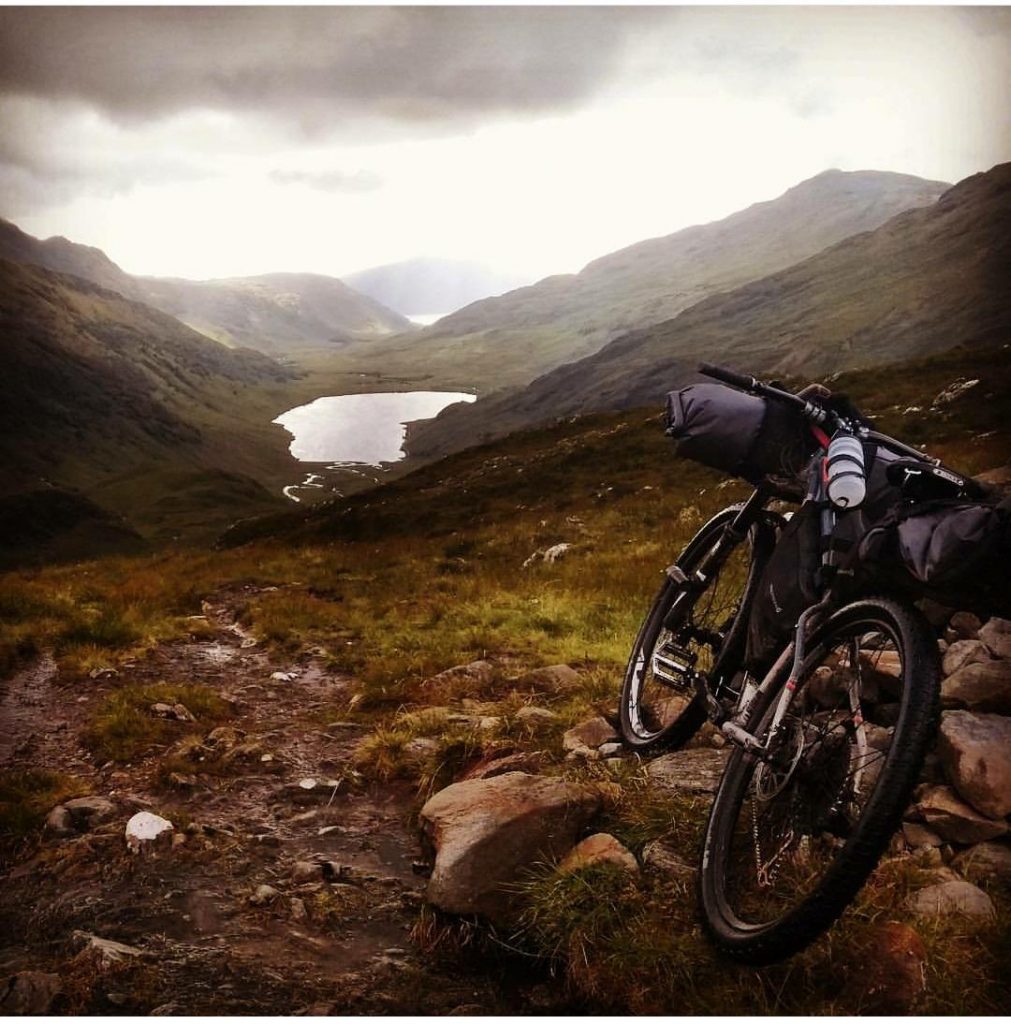
I was having a quick scan around the internet at the information available on training for endurance events and thought it would useful to write an article on training for an Ultra-Endurance Mountain Bike Event.
So how do you train for an ultra endurance mountain bike race? The best way is to break your training down into specific areas, here are 5 of the most important:
- Build endurance by doing long rides on representative terrain so that you can ride long each day;
- Build your ability to ride hard and fast by doing short interval sessions and short hard rides so that you increase your average riding speed;
- Improve your skills by riding technical terrain, learning appropriate skills and so that you are as efficient as possible on technical terrain;
- Learn to carry your bike and train yourself for hike-a-bike sections that are often part of longer events;
- Thoroughly research the route so that you know where you can refuel, get water, repair mechanicals and take time for recovery if needed.
There are many ways to get fit for long endurance events and just riding your bike a lot isn’t usually the most effective way. When I started working with Jenny Graham, who broke the round the world cycling record last year, her goals were the Arizona 750 and HT550 and she finished first female in both events. Here is what I have learned whilst working with Jenny and other athletes in preparation for Ultra Endurance Cycling events and particularly off road events such as those mentioned above.
Focus on the basics first
Think about the fundamental elements of what you will need to meet your goals in your chosen event. Have a look at
- the course (or the route of the previous year if your route isn’t released),
- previous finishing times,
- the rules,
- likely weather conditions,
- any relevant cultural or regional factors such as language,
- etc.
Basically, spend a few hours just listing anything you can think of, even if it doesn’t seem relevant, you can cross it off your list later.
Once you have this list you will have a much better understanding of your event.
Now write down your main for the event in one sentence, it is worth spending a bit of time thinking about this as well as why you want to achieve it. The more you understand your goal and why you want to achieve it, the more your chances of success. You will have some obstacles in your preparation and getting over these will be much easier if you understand why you are doing it and have a clear objective.
Next spend time thinking about whether you could achieve your goal if the event started tomorrow. I guess that you wouldn’t be able to achieve your goals, if you could then you don’t need any training and you can stop reading if you like. If you couldn’t achieve your goals if the race started tomorrow you can spend some time listing the areas you need to work on to make the goal a reality. These might be:
- You can’t ride the distance you will need to cover in each day;
- You don’t have the right equipment;
- You don’t have a route plan (if it isn’t a set route);
- You don’t have the technical skills, so would need to walk a lot of the course;
- Maybe even that you need to save some money and holiday time to be able to do the event;
- etc.
This list gives you an idea of the things you need to work on and allows you to set some goals, in turn, helping you focus your training on the most important areas.
Ride longer and faster
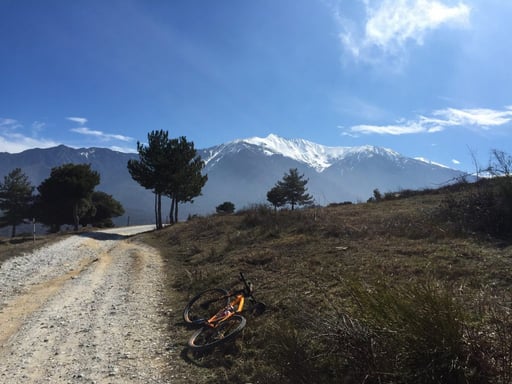
Don’t just focus on doing long rides, work on riding faster as well; this will make it easier to ride at slower paces as well, so that you use less energy and the longer rides get easier as well.
It is tempting to think that the best way to train for long events is to do long rides. This isn’t the case for a number of reasons, some of which are practical and some are physiological.
In practical terms, most people have restrictions on their time such as work commitments, family, shopping, etc., which makes it more efficient to do some shorter training sessions as well as longer ones. Shorter sessions can be more intense and therefore have a bigger impact on certain types of fitness, in turn, helping your fitness and ability to ride longer at a given pace.
Physiologically, it is best to do some harder, faster rides, which will make your longer rides faster for a given level of effort or you will be able to use less energy at your usual endurance pace.
A good way to schedule training is to do faster rides during weekdays and longer rides at the weekends but it depends on your schedule. Just make sure you have sufficient recovery because it is during the recovery that your body adapts and builds, so that when you are recovered you are stronger and fitter than before your previous training sessions. You can plan blocks of training on Tuesday, Wednesday and Thursday with shorter sessions and then longer rides on Saturday and Sunday. This gives you Mondays and Fridays for recovery. As you progress and ride longer at the weekends, you may need to take it easy on Tuesday as well, and you may want to make Thursday an easy day so you can do a 3 day block of Friday, Saturday and Sunday.
You can learn more about scheduling workouts from this article, which includes how to incorporate strength training sessions.
This all assumes you are working a roughly standard week but with a bit of thought you can adapt the sessions accordingly.
Ride longer and build endurance
Riding longer is best done in discrete sessions that are progressive. If you can ride for 2 hours in one go then build on that until you can ride for the amount of time you will need to ride during the event. Don’t worry about riding long back to back days at first, just focus on building the duration of your longest ride. Like with most things in getting fitter it is best to focus on things separately and then bring them together as the event becomes closer.
As well as building your endurance, your longer rides are an opportunity to practice your pacing and your nutrition strategy. Getting the right nutrition can make a huge difference. A lot of people set off and ride too fast early in the ride, don’t drink or eat enough and therefore end up getting overly tired too quickly. It is worth using a nutrition product if you find one that works, particularly for training, and then try to work out how to simulate that in the event if you can.
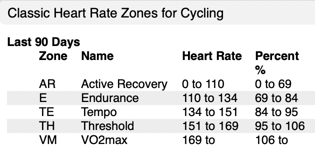
If you use a heart rate monitor or power meter you can use it to help you develop a good pacing plan. In general, it is best to ride harder uphills and a bit easier on flat sections, using downhills for recovery. This is due to aerodynamic drag, so not a critical for mountain biking but still relevant. I wrote an article about heart rate monitors that you can refer to if you want to learn about training zones and training with heart rate, you can access it by clicking here. I’ve have included the table of zones here as well but remember to calculate your own zones based on the percentages of maximum heart rate and don’t use the ones in the table.
Using a 5 zones model, as described in the article, a good pace for climbing is the upper end of zone 2, just getting into zone 3; on the flat sections aim for upper zone 1/lower zone 2 and definitely stick to zone 1 on downhills. You can use similar zones if you are riding with a power meter. In terms of feel, you should be a little uncomfortable on climbs, able to talk on the flat and relaxed on downhills.
Note that if you use a heart rate monitor, your heart rate will be impacted by how tired you are, how hydrated you are, how hot you are, etc. So learn what the zones feel like during your longer rides and use your feelings during the event where your heart rate may be less reliable. For example, after a few days it will be difficult to get your heart rate to go high due to fatigue.
If you can figure out a good system with easily defined products like premade sports nutrition, you can then try to mimic it with things you can get along the way. If you have a look at home made sports nutrition you could find something that works for you and can be purchased easily in your event, perhaps a combination of fruit juice, a little salt and some water can make a great electrolyte/energy drink. Vary the concentrations to suit how much you are sweating and how much carbohydrate you need.
As with everything, make sure you test everything before the event to avoid nasty surprises.
Ride harder and get faster
Doing harder, faster sessions will have big impacts on your fitness as well as being much more time efficient.
There are two main types of hard riding that are relevant to you. These are known as tempo and VO2max.
Tempo
Tempo training is something that you can sustain for quite a long time, maybe 30 to 90 minutes and is represented by your zone 3 heart rate or power. Once you have done a couple of weeks riding at an easy/endurance pace you are ready to start some harder training. As a guide, this should feel a bit uncomfortable but like you can keep going at that pace, like you can converse but only in short phrases and generally it feels better not to talk and just focus on riding.
These sessions help your basic riding speed and build your ability to ride at a relatively fast, steady pace. Examples would be on long road or fire road climbs where you are concentrating on pedalling and not technical terrain.
Good tempo sessions to start with are 2 or 3 x 15 minutes with 5 minutes rest between each effort, 3 x 20 minutes with 5 minutes or 1 x 30 minutes. As you get fitter you will be able to build up to longer efforts so that you are doing a total of up to 90 minutes or more at tempo.
It is best to do these efforts on a good surface where you just focus on riding. You can use a road bike or a mountain bike, or an indoor trainer. If you have a gym membership, using a Wattbike or similar is a great way to start incorporating power into your workouts. Many athletes I work with have found that a Wattbike in the gym is a great way to do harder, more focused sessions and actually enjoy working with power in that way. This works even better for the VO2 max efforts, see the next section.
Threshold is a bit like hard tempo, a level of effort you can sustain for between 30 and 70 minutes before you have to slow down. You can treat it in a similar way to tempo but doing shorter efforts with shorter recoveries, things like 3 or 4 x 8 minutes with 2 minutes recoveries are great Threshold workouts.
VO2max
After a few weeks of doing tempo sessions you can start to include some VO2max sessions into your plan.
VO2max sessions are a bit different, although they also known as maximum aerobic efforts and your VO2max represents your maximum aerobic capacity, you are going to be working at least to some extent, on your anaerobic energy systems. Great for mountain biking, where it is sometimes so steep you are forced to ride hard.
These sessions will increase your VO2max, which is the basic limiter of your aerobic fitness. Putting this more simply, if you increase the speed or power you can ride at your VO2max, you are likely to increase the speed or power you can ride at any other aerobic effort, even your zone 1 speed will get faster.
Good VO2max sessions are 2 sets of 10 x 1 minute with 1 minute recoveries and 5 minutes between sets, or 4 x 5 minutes with 5 minutes recoveries. Experiment and keep the recoveries around the same duration as the efforts.
Don’t rush into riding long back to back days
It may be tempting to think that you have to practice riding on consecutive days but in practice, getting better at riding faster and longer in one go is equally, if not more important. The basic principle of longer ultra-endurance events is that you are going to get tired initially but you would aim to keep things sustainable. If you are increasing your level of fatigue by a lot each day you aren’t going to finish, or you are going to finish slowly. It is all about riding long and recovering as much as possible and then doing it again.
The other problem with doing more than a couple of long rides on consecutive days is that you will need a lot of recovery, maybe a week or two, so you won’t be able to train and develop your fitness during that time.
On this basis, it is best to focus most of your effort on the longer 1 day rides and the shorter harder rides. Once you can ride for around 8 hours in one day and feel reasonably the next day you can start working on consecutive days. However, this is as much about getting used to what it feels like than it is about training your physiology. Start by incorporating a short ride on the day after your long ride and build that up along with your main long ride. It is best to keep long weekends to every other weekend at most and just do one longish ride and a short ride on the other weekends to give yourself a mental and physical break.
A great way to build specific fitness is to find some shorter events to do that challenge your endurance in a relevant way. It keeps things interesting and provides a great learning experience.
If you have time, spend some time in the gym to build strength
Off road riding and particularly mountain biking puts far greater demands on the upper body and core than road cycling. This is even more the case if you need to carry your bike over difficult technical sections. Spending time in the gym working on building strength will definitely pay dividends and even one session a week will be worth it.
There are many great books on strength and conditioning but I particularly like the book by Phil Burt and Martin Evans: Strength and Conditioning for Cyclists because it takes care to ensure that correct range of motion is available before moving on to more loaded efforts.
Develop your technical skills
The better you are technically, the less energy you will use on technical terrain so the better you can get the better you are likely to do.
If you have reasonable technical skills, it is a good idea to focus on getting stronger and fitter, developing your skills as you do your off road riding. However, if you are finding your skills are limiting your riding, you may need to put some effort into getting better.
Rather than just trying to get better technically during your normal rides, it is better to do focused sessions where you concentrate on improving a particular skill. Riding a particular section of trail that you find difficult several times can be a great way to learn and once you have it conquered you can incorporate it into your more general training rides so that you retain and develop your skills further.
It may also be worth considering booking a specific skills course. These can be great fun as well as being really effective and building your confidence.
Work out a carrying system and practice it

It is necessary to carry your bike many mountain bike events when the terrain is not possible to ride. In fact, in at least one race I can think of it is mandatory. In the Arizona 750 it is necessary to hike a bike through the Grand Canyon because cycling isn’t allowed. Added to this is the complication that it is also illegal to camp in the Grand Canyon so the race requires a long sustained carry. This was a point of some discussion with Jenny Graham as she prepared for the race.
There are various methods of carrying a bike and I have seen a number of very helpful YouTube videos, so it makes more sense for you to do a search on the web and find what works for you rather than me try to explain the details here. Just type how to carry a mountain bike into Google and you will have plenty to work with.
Get enough rest and learn how to spot when you are getting too tired
This is perhaps more important than getting the nuances of training right. Doing too much is definitely much worse than doing to little, so stay cautious and learn to spot when things might be drifting towards excessive fatigue.
Making sure you have planned rest days and easier weeks is a good way to ensure you don’t get too tired but sometimes things like illness, work, etc., get in the way and cause unexpected stress and fatigue so beware.
You can use objective metrics like heart rate variability (HRV) and resting heart rate as well as more subjective measures like how tired you feel, your mood, how well you are sleeping, etc. For these to work effectively you need to build up a baseline so that you know what is normal and can spot things changing for the better, ideally, or for the worse, not ideal but better to spot them.
If you take your pulse and HRV each morning and record some other things like your mood, sleep, sleep quality, fatigue, etc. you will quickly build up an understanding of how things should be. You can use tools like TrainingPeaks to look at trends in these values, which can be very helpful. For example, comparing HRV and sleep for one of my athletes showed a clear correlation with fatigue when she got less than 8 hours sleep for a sustained period. She is now able to focus on getting at least 8 hours sleep and that is really helping her manage her fatigue levels.
A good, less objective, but effective method is to get your friends or family to mention if they notice your mood changing for a day or two. If you explain the reasoning and what to look out for this is a great approach. Of course, if you work closely with a coach they can also help with observations.
Having said all that, there are no guarantees so be careful and stay on the safe side.
Thoroughly research the route and plan as much as possible
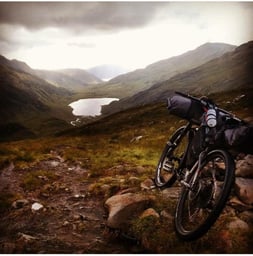
Your route will inform the training that you do and your riding strategy so spend some time considering what is important. If you have long sections without the option of some sort of resupply you need to be aware of them and have a plan.
Have a look at the accounts of previous competitors if it is an event that has been run before so you can understand as much as possible about what to expect.
Ride sections of the course if it is at all possible so that you know what to expect and can prepare for any tricky sections.
Read the rules and guidance of the event for snippets and also to make sure you don’t do something that disqualifies your efforts.
Use all the resources you can, you can never learn too much.
Get the right equipment and develop the skills to make basic repairs
Think about how much time and money you are committing to training and how you would feel if you had a mechanical failure because you had skimped on a certain piece of kit because you decided to ‘risk it’. It isn’t necessary to have the highest end equipment, in fact there is a strong argument to have something less fancy or complicated that can be easily repaired and replacement parts easily obtained.
However, it is important to make sure you have robust equipment that isn’t worn out, make sure your tyres are suitable for the terrain and are in good enough condition to comfortably complete the course. Don’t use an old chain that might snap, just use some common sense and make sure everything is in working order and won’t let you down and leave you stuck in the middle of nowhere with a long walk ahead.
Plan a daily time schedule, not a distance schedule
Most, if not all, ultra endurance cyclists I have worked with have found that working to a time schedule is far more effective and less stressful than working to a distance schedule. It is impossible to predict the unexpected things that may and probably will happen during a long event and having your daily distance schedule knocked by such an event could leave your whole schedule in pieces.
It is best to use distances in making certain assumptions about where you will be at certain times. If you need to resupply at a certain point because you have a long way before the next opportunity, etc. Then it is best to plan your days according to daily but flexible schedule so that you have so much riding time, eating, sleeping, faffing, etc. You may smile at the faffing time but if you forget it, you will realise that you are struggling for time. Practice your schedule and make sure it works. Have night in the garden to test everything, it may sound silly but it is worth it.
Be flexible and use the unexpected to your advantage. If you are going to have to wait in a town for a bike shop to open the next day, you can get a good meal and book into a hotel for the night to get extra rest, wash your kit and get reorganised so that you can make the most of the next part of the ride once you get going again.
Get your nutrition right
Nutrition is vitally important to being successful. Obviously the most important is to get enough calories to keep you going and I can think of several accounts I have heard by experienced ultra-endurance mountain bike racers where they have lost significant time and places in events due to inadequate nutrition.
Make a nutrition plan, practice it and make it a routine. If in doubt, play it safe and spend a bit of time making sure you have sufficient supplies.
Think about ‘what ifs’
‘What ifs’ are something I do with all my athletes, whether they are going to do a short event lasting less than an hour or a multiday endurance event. Obviously the ifs are significantly different but the process is the same.
Start now and every time you think of something that might happen to cause a problem in your event, make a note of it. Keep going through your list and adding what you will do if that thing happens or what you need to carry to account for that eventuality. It may be that you decide the risk of something happening is low or the consequences are so low that you can ignore it but at least you have thought it through.
This approach will do two things, firstly it will reduce the number of unexpected things that happen because you will have prepared your equipment accordingly, it will also mean that you are better equipped to deal with things that happen along the way because you have strategies. You are less likely to panic unduly and also have a plan to move forward. Hopefully all will go smoothly but is that likely!?
It is also good to have a strategy for if something goes wrong that you don’t expect. I like the acronym from Steve Peters’ book: The Chimp Paradox – AMP, which stands for Accept and Move forward with a Plan. Basically, accept that things go wrong and not everything is in your control, Accept that it is normal to panic in these situations and Allow yourself some time to panic, be emotional and get that out of your system. Then, Make a Plan and Move forward with that Plan.
Make a plan and stick to it
There is loads of stuff to go on there, now you have to make sure you do it and do it in a structured way. The best way to do that is to make a plan that takes you from now until your chosen event.
You can use a spreadsheet, a bit of paper or a tool like TrainingPeaks and write down what things you need to do each month and what your goals are for each month so that you address all the things you need to. As a guide, it is best to spend a couple of months on each goal if you are trying to make a physiological or psychological change, so don’t worry if you don’t see a change after a couple of weeks of VO2max sessions. Also, remember to give yourself enough rest and recovery.
Break that plan down into weeks and I find it best to work with a one week or two week cycle so I plan the same sort of session for each day. I gave some ideas of how to arrange a week of training earlier in the article, so have a look at that.
Good luck and have fun!
Tags:
cycling, Cycling Training, Heart Rate Monitor, Cycle Training, Bikepacking, Nutrition, Coaching, Mountain BikingAugust 14, 2019
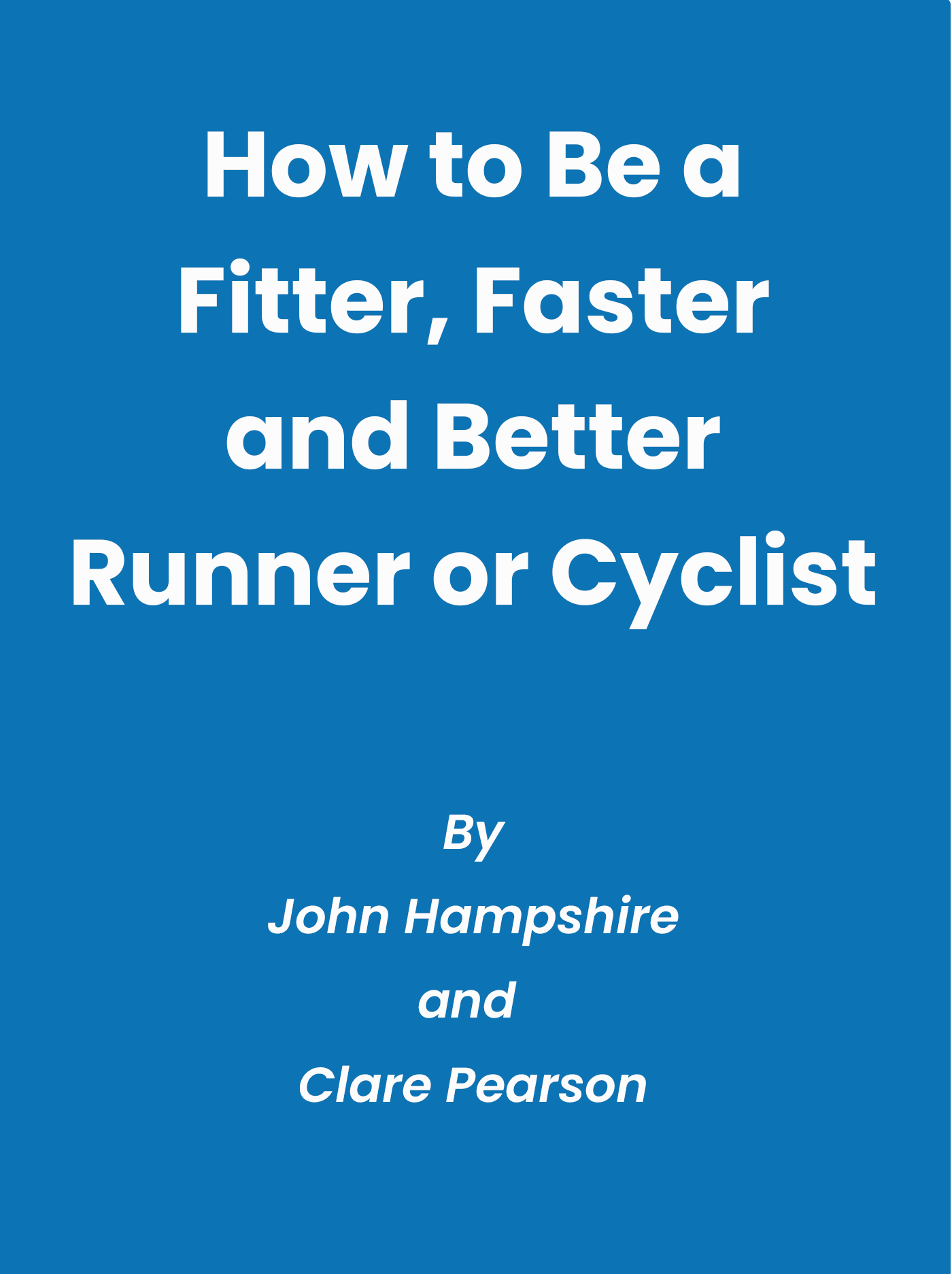
Comments